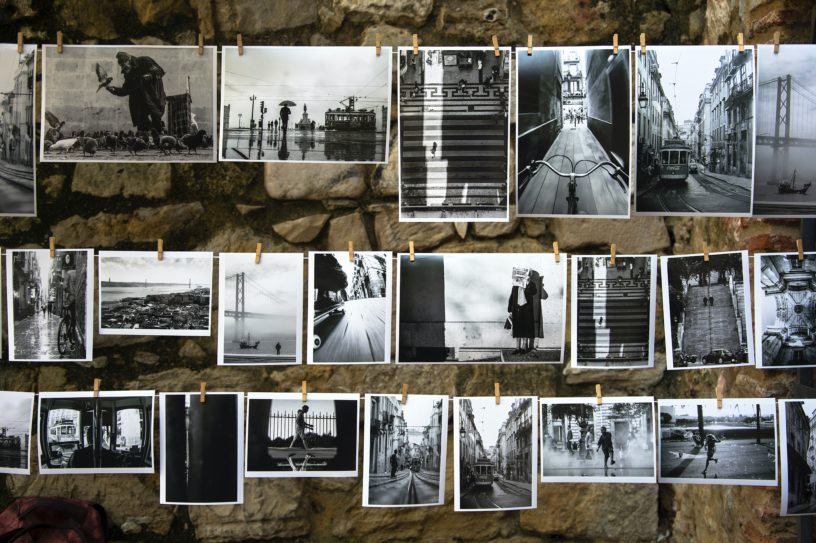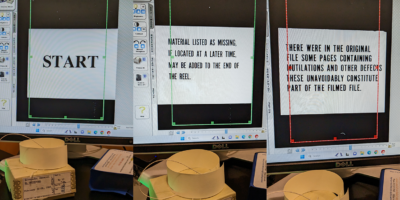By Asilia Franklin-Phipps
Because I primarily teach future and inservice teachers, my approach to teaching has to both facilitate engagement with content, while also modeling a kind of teaching that is coherent with that content. Put differently, if I emphasize the importance of giving students in their classrooms lots of choices as a commitment or feature of good teaching; it is useful to model this as the instructor. For this reason I am particularly interested in how theory and praxis work together. I am always trying to figure out how to teach in the ways that we widely know are more ethical, more useful, and more relevant in a neoliberal structure that does not value those things. I am aware of how students, particularly beginning teachers, are navigating that terrain as well. I am also aware that they are doing so under a variety of different circumstances that contextualize their work with students. Acknowledging these difficulties, I wonder how we as instructors might encourage students to inquire into the world when we dictate everything in the one context that is supposedly devoted to that inquiry? And how might we do otherwise?
With this in mind, I have been experimenting with student choice. Many of the students I work with have had limited educational experiences where they were encouraged to ask the questions that they have about the world and were supported in doing work toward answering those questions. Sometimes they might have so little experience with that model of education in a classroom setting that they assume my emphasis on student choice and inquiry means that I do not know what I am doing or that I am unqualified to be the instructor. An undergraduate student once asked me why I didn’t tell the class what to do more often.
I often try things that are a bit unconventional by starting on a smaller scale in order to acclimate students to a new approach and also be able to see how far I might be able to take it in the future. I might want students to make art instead of writing a paper, so I will offer it as an option. I have always given students choices in the kind of paper they write, in the kind of project they do, in what they read, etc. For example I might give them four titles of articles around a particular topic and ask them to read two of their choice. I do this because it opens up more space for the unpredictable and in my experience they are much more engaged when I resist dictating every moment.
By working hard to give students choices, I acknowledge how little control I actually have over what happens in a given class and see it as potential. A student might ask me in response to a requirement that they teach the class for 30 minutes on a topic, “What do you want us to do with the 30 minutes?” With this question, I imagine they want a bulleted list of how they should use the 30 minutes. In this situation I could tell them what I would do if I had 30 minutes to present something, but that is really not the point if they are the ones meant to learn through the experience. I might say to their often-exasperated expressions, what do you want to do with the 30 minutes? Or sometimes, what would be useful and fun for you? I understand that this is more work for them (and for me). I also am sensitive to the fact that such an approach can be anxiety-producing for some. Even so, I believe it is worth overcoming the discomfort of both of these likelihoods. In this approach, I attempt to resist how so much of schooling is imagined and experienced—as an unpleasant set of boxes to check off in order to have those things that we imagine enable happiness (Ahmed, 2010). I might assert that this is particularly the case for teacher education. Future teachers are asked to do so many things without a clear reason. This can make graduate courses and field work requirements into something to suffer through in order to get a job.
An approach that privileges choice also privileges the unpredictable. I am willing to facilitate space that is counter to the norm because I actually do believe that there are important questions that we can ask of ourselves and one another in classroom spaces. By teaching in this way, I am pretending that it is a perfectly normal thing to ask students what would be useful and fun for you, rather than telling them what should be. I am pretending that useful and fun is the norm, rather than not. I know that I am pretending, but sometimes they don’t know. Or they do know and they opt into this, ignoring the exhaustion, stress, and fatigue of working full time while pursuing a graduate degree. And with such pretending, we are engaged in a collective conjuring, or willing, of a temporary educational space that does not have to be over-constituted by obligation and exhaustion. This might sound unlikely, but I have had the pleasure of participating in such creations on many occasions.
In fostering choice and open-ended assignments, it is not that I am not unwilling to give guidance. I am unwilling to give too much guidance. Not because I am lazy or disorganized, but because I have learned that beginning with their interests, their questions, their frustrations, and their curiosity is a much better starting point for guidance. We are better able to persist through exhaustion when we are engaged. I’ve read a book until sunrise, but only a good book. As an experienced instructor I do have some good ideas, but I don’t have all of the good ideas. Each time I have given students flexible constraints and encouraged them to find their own way into the content, the work, the thinking, the overall class is better.
With this pedagogical focus, I designed a course called “Perspectives on Education: Teaching Children and Adolescents in a Cultural Context.” It was an Education Foundation course, a graduate course meant to support teachers and future-teachers in contextualizing education by reading educational history, theory, and research. This particular course was a winter session hybrid course for graduate fellows who were already teaching in their own classrooms. In this course, I hoped to guide students in examining the cultural and sociocultural contexts of teaching and learning in school. We read lots of interesting research articles about gender, race, sexuality, class, ability, and the experiences of children and adolescents. We also read educational theory and about the history of public schools. We began the course by reading much the same things, but then diverged based on subtopic interest. For example, we might agree to all read one article and then individually choose another that was about a similar topic.
In this course, we practiced analyzing how culture, history, policy, and structures produce and facilitate particular kinds of raced, gendered, classed, and minoritized experiences in school. Reading across genres made space for multiple ways of thinking and connecting. This included film, television, and novels where students might see sociocultural phenomena at work. They might reflect on their own time observing other teachers or teaching in their own classrooms with a new vocabulary gained from reading and discussion. After a few weeks of thinking together, students chose from a list of themes (I encouraged them to add to the list). Their choices could be topics they were previously interested in or questions that came up for them while reading. The list had about 15-20 themes, including those we had read about. Some of the themes were mental health, gender, race, sexuality, family, class, ability, beauty, masculinity, violence, and many more. I worried that there were too many choices, but over and over students said that they liked all of the choices and that even the lists were an important part of the course. This is because they were able to connect social issues and themes in ways that were new. In deciding on their themes, they were able to wonder how these things were entangled and related to education. Part of their work was articulating how the themes relate and why teachers should care about that relationship.
From the list they chose two to three themes and they then chose a negotiated number of television shows, films, and literary texts. For example, one group was interested in mental health, gender, and sexuality. They wondered how queer and gender non-comforming young peoples’ experience in school might impact wellness. They proposed watching “Euphoria”, “13 Reasons Why”, and “Skins UK”. They realized that although all of those shows feature queer youths, but they are rarely the main characters. They recognized problematic tropes and became aware of moments of potential that were in excess of those tropes. They also reflected on their own experiences when that was useful.
Prior to beginning, the small groups wrote a very brief project proposal where they listed their chosen themes and the films, televisions shows, and literary texts that they planned to read in order to explore those themes. For weeks they worked together to watch their films and television shows, read their books, and revisit shared course readings. All of this work culminated in a final presentation about what they learned and a paper that discusses the implications of their collective learning. While they did have final papers, my interest was in the process of critically watching and reading literary and cultural texts informed by knowledge of educational research.
Another group was very interested in the dominant discourse of violence, gender, and race. They wondered why there was a particular way of describing violence when the perpetrators were black adolescent boys and a different way of describing violence when the perpetrators were white adolescent boys. They chose films that contextualized violence, exploring the background of the violent person. They watched the television show “The Wire,” the films “American Psycho,” “Dangerous Minds” and read We Need to Talk About Kevin by Lionel Shriver (a book about a school shooter), noting that white boys and men who do violence get a backstory. I didn’t like the choice of American Psycho because it was about a grown man, but it helped them make sense of something that they had questions about. I trusted them to find the relevance or abandon and choose something else. They reflected on all the movies that presented sympathetic views of white male serial killers and the writing about white school shooters. They contrasted those texts with Ava Duvernay’s “When They See Us.” They also looked at statistics and complicated the concept of violence, noticing how elastic its use was and how the categorization of violence was racial. Further, they became attuned to the ways that students were produced as violent in and out of school contexts in ways that were raced, classed, and gendered.
These are only two examples, but all of the students in the course did interesting, relevant, and exciting work. We created an intellectual community in our class. While I might have imagined that this is what I was already doing when I taught courses, I do not think that this was the case. Refusing the hierarchies common in college classrooms helped us co-create an intellectual community.
Asilia Franklin-Phipps is a Postdoctoral Fellow at The Teaching and Learning Center and teaches at Brooklyn College and Hunter College in Education.










Leave a Reply